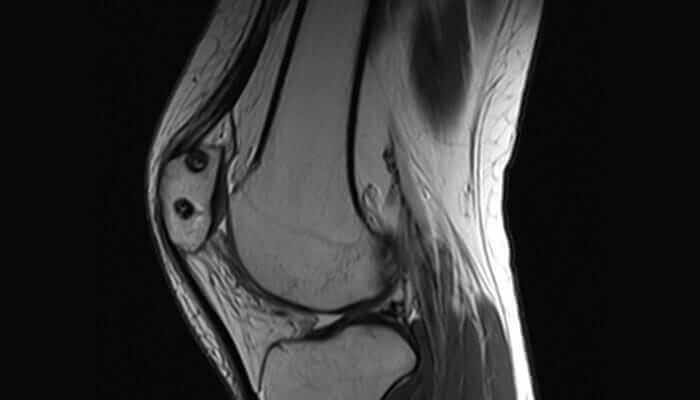Patellar Tendonitis (kneecap pain), what is it? Your kneecaps are important parts of that complex system of ligaments, tendons, muscles, and meniscus pads making up your knee joints.
While it may seem that your kneecap serves no other function than just providing a cover to the front of the knee, it actually has a very important job – it strengthens the thigh’s quadriceps muscles by about 30%.
The kneecap accomplishes this by means of the patellar (kneecap) tendon, which extends from the base of the kneecap to the top of the tibia, or shin bone. The top of the kneecap is attached to the quadriceps tendon.
What Is Patellar Tendonitis?
Patellar tendonitis, or tendonitis in the kneecap (kneecap pain), refers to any kind of irritation or inflammation of the patellar tendon. The tendon can have an actual tear in it, or simply suffer from swelling and inflammation.
You can develop tendonitis in the kneecap from cycling in several ways:
- Repetitive movements are one of the major causes of patellar tendonitis, and there is no way around this kind of movement if you enjoy cycling.
- Cycling on more difficult terrain, going up and down slopes, will increase your chances of injuring the tendon.
- Striking your leg onto the ground, perhaps to prevent a fall, can injure the tendon. And naturally, an actual crash can also damage your kneecap tendon.
- Incorrect positioning of your bike’s seat and handlebars can also make it more likely that you will suffer tendonitis.
How to Tell if You’re Developing Tendonitis in Your Kneecap
The onset of patellar tendonitis is seldom a dramatic jolt of pain; this is the type of injury that can really sneak up on you since it’s often fairly innocuous in its initial stages. Always remember to pay attention to what your body is telling you so that you will be able to minimize further injury and accelerate healing.
- To begin with, you will feel some pain either when you are just beginning to bike or when you are finishing your ride.
- If you ignore these signals, you will soon come to feel some pain and discomfort during the entire duration of your ride. At this point you will begin to curtail cycling activity.
- As the condition worsens, ordinary activities around the home will become uncomfortable. You’ll notice that it hurts to get up from the sofa or to climb stairs.
- Left untreated, pain from patellar tendonitis will make it hard for you to carry on with your normal activities.
- In extreme cases, the kneecap and tendon will become red and swollen and painful to the touch.
How to Treat Kneecap Pain
The first step in treating the symptoms of patellar tendonitis (kneecap pain) can be summed up in the acronym ‘PRICE’:
- Protection from further harm, meaning that cycling is put on hold for a bit.
- Rest the leg to keep weight off of it, plan on about 3 days at a minimum.
- Ice the injury by placing a bag of crushed ice or a bag of frozen vegetables, wrapped in a towel, to the injury for 20 minutes 3 or 4 times a day. Never place the ice or vegetables directly on your skin, it can cause frostbite.
- Compression by the use of Ace bandage or other elastic wrap (always make certain that you can fit two fingers under the bandage).
- Elevation will help drain off excess fluids from swelling.
If your kneecap pain symptoms continue past a week, or if they worsen, it’s advisable to see your physician.
You should also consider massage as a way to speed up the healing process and reducing kneecap pain to help to strengthen the surrounding muscles. There are several ways that massage therapy from a qualified therapist can help to heal your injured tendon more quickly:
- Any scar tissue that has formed can be broken up by massage.
- Increased circulation on the surrounding muscles will help to bring more blood to the area so the tendon will be able to regenerate faster.
- Massage can be applied directly to the tendon, using light pressure to begin with and gradually increasing to accelerate healing.
A knowledgeable massage therapist can not only treat the damaged tendon, but can also help to strengthen the muscles in the thigh and calf to make it less likely that the injury will occur again.
